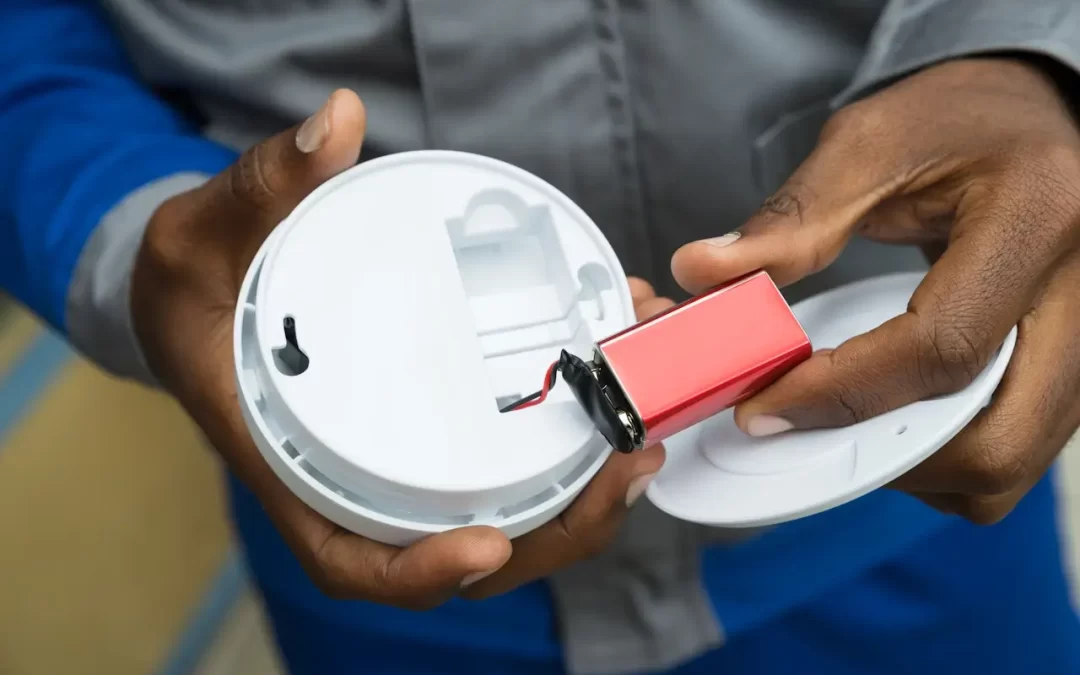When it comes to home safety, few devices are as essential as smoke detectors. Smoke detectors can save lives if a fire breaks out in your house. But having these devices in your living spaces isn’t enough – where and how you place them impacts their effectiveness. Here are a few tips for smoke detector placement to protect your home and loved ones.
Tips for Smoke Detector Placement
1. Install Detectors in Key Areas
To maximize your family’s and home’s safety, install smoke detectors in areas where fires can be most dangerous. Have at least one sensor on each floor of the house and in these other locations throughout the home.
Smoke Detector Placement in Bedrooms
Place a smoke detector in each bedroom to provide early warning if a fire breaks out while you and your family are asleep. Family members are usually less alert when spending time in their bedrooms. A detector will warn them in case of fire.
Hallways
Install detectors in hallways outside of sleeping areas. If a fire breaks out elsewhere in the house, the hallway device will alert family members in their bedrooms to the danger.
Living Areas
Include detectors in living rooms, dens, and family rooms, where fires can occur due to electrical appliances or heating sources.
Kitchen
While cooking can sometimes trigger false alarms, having a detector in the area is essential. Install your kitchen smoke detector 10 to 12 feet away from cooking appliances.
Stairwells
If your home has multiple levels, install detectors on the ceiling at the bottom of each stairwell to ensure coverage on each floor. The device will alert occupants upstairs if a fire breaks out on a lower floor.
2. Smoke Detector Placement on Walls or Ceilings
Mount detectors high on walls or ceilings for optimal results. Smoke rises, so placing sensors in elevated locations allows them to sense smoke more quickly. Install smoke detectors on the ceiling at least four inches from the nearest wall. If ceiling mounting isn’t feasible, install detectors on walls, ideally within 4 to 12 inches from the ceiling.
3. Avoid Placement Near Drafty Areas
Drafty areas can affect the accuracy of smoke detectors. Don’t install your devices in these locations.
- Don’t place a smoke detector near a window or door. The airflow near windows and doors can disperse smoke before it reaches the device.
- Keep detectors away from HVAC vents. Air currents can interfere with smoke detection.
- Smoke detectors will be less effective if installed near fans. Ceiling fans affect airflow and may delay a sensor detecting smoke or flames.
4. Install Interconnected Detectors
For comprehensive protection, install interconnected smoke alarms. When one device detects smoke, all detectors throughout the home will sound. Linked alarms ensure everyone in the house is alerted quickly, regardless of the location of the fire. Interconnected detectors can be wired together or connected wirelessly depending on the model.
5. Smoke Detector Placement: Basement and Garage
Basements and garages may be overlooked when installing smoke detectors, but they are not immune to fire hazards. Install smoke detectors in these areas to provide early warning if a fire occurs due to appliances, electrical issues, or stored flammable materials.
6. Regular Maintenance is Key
Proper placement is just one aspect of smoke detector effectiveness. Regular maintenance is equally important.
- Test your smoke detectors monthly to verify they are functioning correctly.
- Change the batteries at least once a year or when the low-battery warning chirps. Always keep fresh batteries on hand.
- Clean the detectors regularly to remove dust and debris that can hinder their performance.
- Replace smoke detectors every ten years as sensors become less effective over time.
7. Consider Advanced Features
Modern smoke detectors offer advanced features like Interconnected options, carbon monoxide detection, and smart home integration. Choose additional features based on your needs and preferences. Carbon monoxide detectors are crucial if you have gas appliances. Smart detectors send alerts to your smartphone in an emergency, providing peace of mind even when you’re away from home.
Following these smoke detector placement and maintenance tips enhances your home’s safety and protects your loved ones from fire. Smoke detectors are your first line of defense in case of a fire; taking the time to position them correctly is a small investment that can yield life-saving results.
AAA Professional Home Inspectors provides inspections to homebuyers and sellers in Kentucky and Southern Indiana. Contact us to schedule our services.

